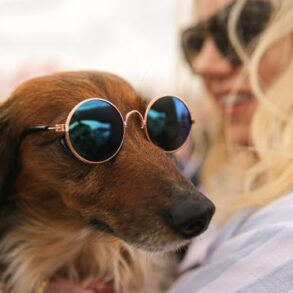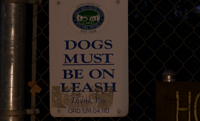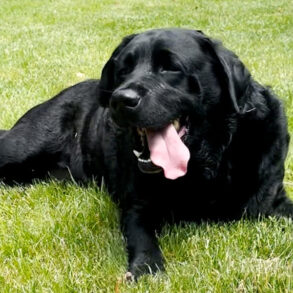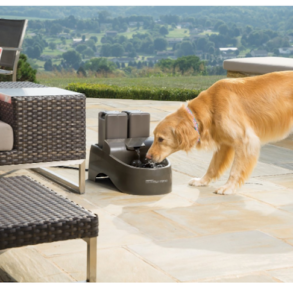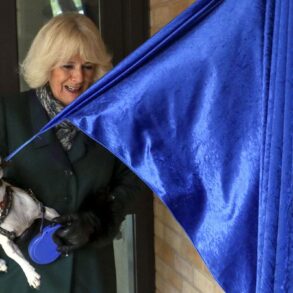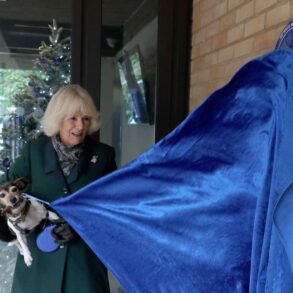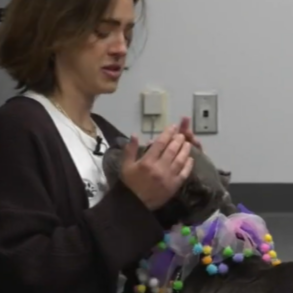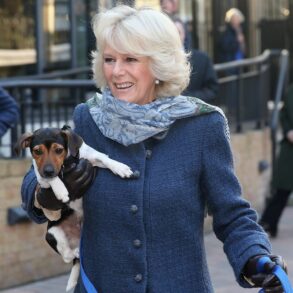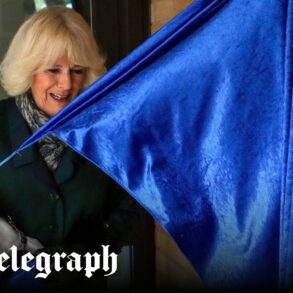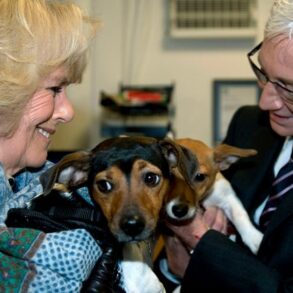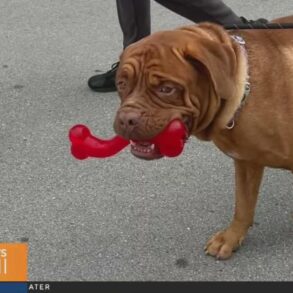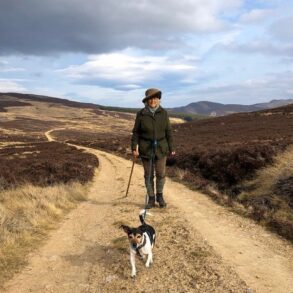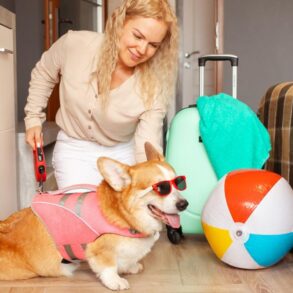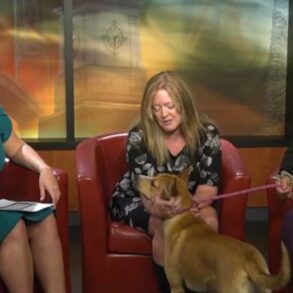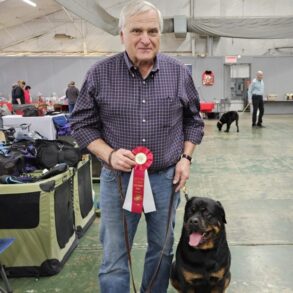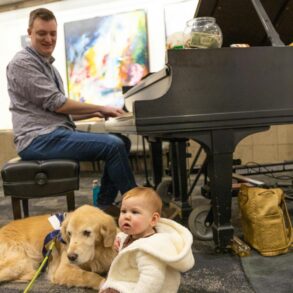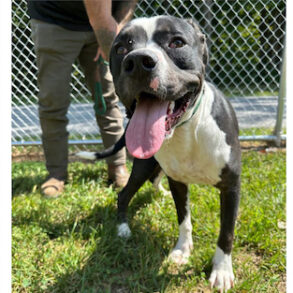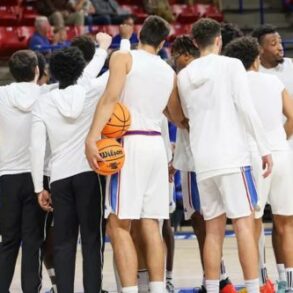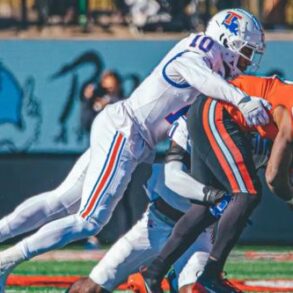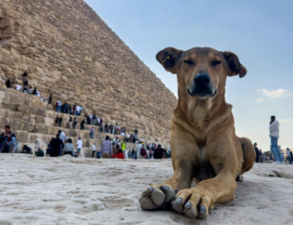For Lucca Baila’s third birthday, his mother, Morgan, knew that he didn’t want balloons or cake or streamers. He wanted Lamb Chop, a stuffed-animal version of the white-and-red puppet from a popular 1960s TV show, and he wanted lots of them. Morgan, a 32-year-old from New York, bought eight small Lamb Chops and turned her apartment into a DIY–Lamb Chop station. Guests got to work on creating custom Lambys, decorating the toys with hats and scarves from Christmas-themed doll kits.
Lucca, a fluffy brown mop of a dog, was then presented with new versions of the toy, one by one. No matter how many times a new Lamb Chop appeared in front of him, his reaction was the same: bouncing, hardwood-floor-scuttling excitement as he accepted each into his mouth and collected them in a pile. Not only did he pose for photos with his new puppet posse, but his “girlfriend”—a jumbo-size Lamb Chop he carries with him everywhere—was also in attendance.
Ask any random dog owner and there’s a good chance they’ll tell you: Lamb Chop is their dog’s favorite toy. They’ll say it with the confidence of having heard it directly from the dog itself. After witnessing my sister’s dog’s dedication to the toy, I spoke with more than 10 dog owners, all of whom were quick to send me pictures, videos, and anecdotes about their own dogs’ seemingly inexplicable Lamby love. One person told me she routinely finds Lamb Chops that her dog has stolen from other dogs’ homes. Another said that her labradoodle has three Lamb Chops but shows particular fondness for the original one, which she’s had for more than five years. This adoration is also a common subject on social media. “Why is no one talking about the dog cult?” the content creator Meredith Lynch asks her followers in a TikTok video before pointing to an image of Lamb Chop. “And this is their leader.”
The numbers seem to prove Lamb Chop’s dominance: According to data shared with me by the pet superstore Chewy, Lamb Chop is the site’s most popular plush dog toy and its second-most-popular dog toy of any kind. Thousands of customers have the toy on autoship. More than 20 iterations of Lamb Chop exist, including Tie-Dye Lamb Chop, Nautical Lamb Chop, and Rainbow Lamb Chop. Stores sell small-size Lamb Chops (six inches), medium-size Lamb Chops (10.5 inches), and jumbo-size Lamb Chops (24 inches)—not to mention Lamb Chop dog costumes, Lamb Chop dog beds, and Lamb Chop food bowls.
The dog market offers thousands of dog toys; Lamb Chop is the only one that many owners seem to treat with the same obligatoriness as they do a collar and leash. My big question is: Why? In pop-cultural terms, Lamb Chop is something of a has-been—she hasn’t been a major presence in the human-entertainment universe for years. In fact, some owners told me they had no knowledge of Lamb Chop ever being anything other than a dog toy. What makes pet owners so sure that buying not just one Lamb Chop but multiple Lamb Chops is money well spent? And is it really possible that dogs, which can be big or small, playful or shy, hunters or herders, could nevertheless share a preference for the exact same plush toy?
For many years, before she featured prominently in pet stores, Lamb Chop was better known on the hands of Shari Lewis, the red-headed puppeteer and ventriloquist. In 1956, the duo made a guest appearance on the children’s CBS series Captain Kangaroo, and eventually, they starred in two TV programs, The Shari Lewis Show in the ’60s and Lamb Chop’s Play-Along in the ’90s. After Lewis’s death in 1998, her daughter, Mallory, took over puppet duties. But Mallory told me that she was not responsible for Lamb Chop’s leap from children’s entertainer to dog’s best friend. The media company Dreamworks owns the Lamb Chop trademark, and the commodification of Lamb Chop seems to have begun sometime after 2008, when Dreamworks offered Lamb Chop’s image to the pet-toy supplier Multipet.
Dog toys, Lamb-ish or not, are necessities. “Playing with toys on their own fulfills dogs’ need to do things like chew, find food, tug … all of which are normal behaviors,” Zazie Todd, the author of Wag: The Science of Making Your Dog Happy, told me in an email. And dogs can have favorite toys, Todd said, depending on their favorite activities—dogs with more energy may prefer to chase a ball, whereas puppies just starting to grow teeth may become attached to a chew toy.
Lamb Chop, incidentally, can fulfill many biological needs for many different kinds of dogs: Big dogs can get big Lambys, and small dogs can get smaller ones. Dogs who prefer to cuddle their toys can find in Lamby a soft companion, and dogs who prefer to destroy them can make quick work of the plushie. Plus, Lamb Chop resembles an animal, which can be enticing—dogs used to hunt. Some dogs, likely with “softer” prey drives, may enjoy simply carrying around Lamb Chop, Christopher Blazina, a psychologist and a co-editor of The Psychology of the Human-Animal Bond, told me. (Sometimes, they carry Lamb Chop to their humans.) Other dogs, such as huskies, malamutes, and terriers, have been bred for their high prey drives and may treat their Lamby more ferociously. Either way, no dog is excluded from the club.
The animal urge to eat Lamb Chop also partly explains the high sales. According to Chewy, many customers buy more than five Lamb Chops a year. Multiple dog owners have shown me the remnants of well-loved Lambys; one owner, in a valiant attempt at frugality, had even tried repairing the toy, until all that remained was an earless, faceless sack held together by string.
But the pet experts I spoke with suggested another, more profound reason for Lamb Chop’s popularity: Dogs may love Lamb Chop because they think their people love Lamb Chop.
Humans and dogs have spent much of their time on Earth together; evidence of shared burials goes back to at least the Stone Age. For most of this time, the relationship was strictly professional: Dogs hunted and herded in exchange for humans’ care. As both “co-evolved,” though, that work shifted, Blazina told me. Although dogs can still aid humans as service dogs or in tasks such as search-and-rescue missions, the average domestic dog’s job “is to be with us and really to be attuned” to our emotions, he said—and “our job is to be with them in the same way.”
In other words, we can’t know for sure that dogs really love Lamb Chop, but we like to think they do—and that might be enough. When we hand a dog the toy, our face may betray a belief that we’re giving the dog something enjoyable, a belief that’s affirmed when the dog sees our excitement and gets excited too. “It ends up being a kind of positive-feedback loop,” Blazina said, “where they get happy and we get happy and then they get happy and then it just keeps going.”
The truth is, Lamb Chop may just be tactile evidence of this projection and mirroring. In 2020, the U.K. dog-welfare charity Dogs Trust polled 2,000 dog owners; 75 percent said they wished their dog could talk, and two of the top questions respondents had for their dogs were “Are you happy?” and “How can I make your life happier?” In pursuit of a response, many humans imagine all kinds of narratives—that their pets know they’re being abandoned for a family vacation, for instance, or that they feel personally rejected when someone doesn’t share with them a bit of steak from the table. Some of the theories are rooted in veterinary science; other behaviors may be more coincidental.
Regardless of whether humans or dogs are responsible for the Lamb Chop–shaped bridge between us, what matters is what the toy represents. Last year, when Cory Stieg knew it was time to say goodbye to Mookie, the Australian shepherd she’d had since she was 19, she turned to Lamb Chop. The days before a pet’s death can be some of the most helpless for their humans. For Stieg and her husband, the jumbo-size Lamb Chop they bought for Mookie offered an assurance that, amid his declining health, they could do one last thing to bring him joy. In a video of the moment, Mookie stares in wide-eyed anticipation as Stieg’s husband removes the tag. He uses his remaining energy to reach for the toy as it dangles above him, finally getting hold of it by the belly. Lamb Chop was probably the last thing Mookie saw before passing away. “He quite literally had her on his deathbed,” Stieg told me. Lamb Chop was there at precisely the moment an entire little family needed her—a symbol of dogs and humans’ shared, ancient desire to make each other happy.
When you buy a book using a link on this page, we receive a commission. Thank you for supporting The Atlantic.
This post was originally published on this site be sure to check out more of their content.











